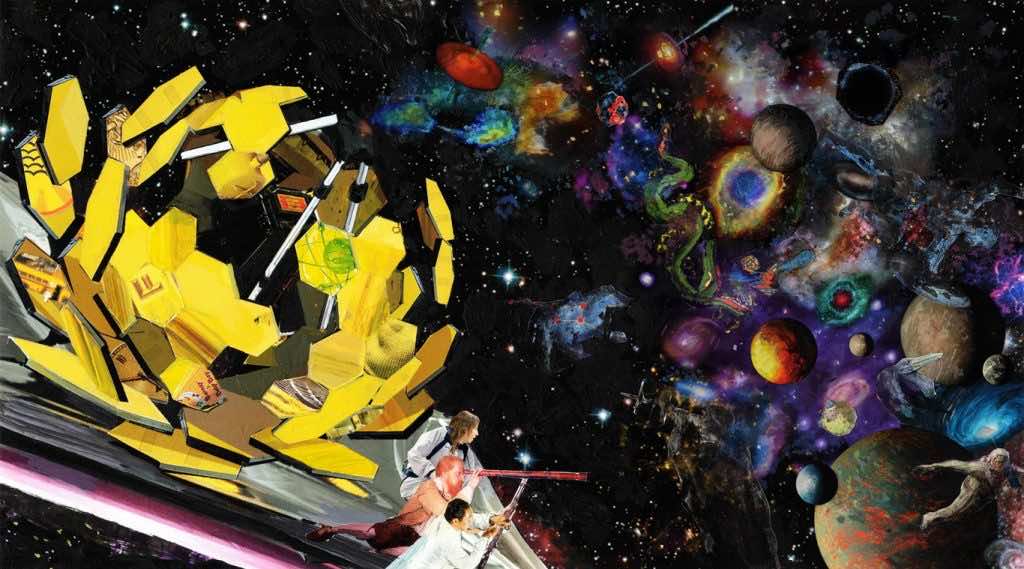NASA has released the first batch of images from the James Webb Space Telescope, including a gravitational lens effect, the water signature of a distant exoplanet, the death throes of a star, a cluster of galaxies, and “cosmic cliffs” where stars are born.
The spacecraft is now on station at about one million miles (1.5 million km) from Earth. It orbits a sector of space called Lagrange 2 (L2) point. This is one of five sites where the gravitational forces of the Earth and the Sun balance out.
“Today, we present humanity with a groundbreaking new view of the cosmos from the James Webb Space Telescope – a view the world has never seen before,” said Nelson. “These images, including the deepest infrared view of our universe that has ever been taken, show us how Webb will help uncover the answers to questions we don’t even yet know to ask; questions that will help us better understand our universe and humanity’s place within it.
“The Webb team’s incredible success is a reflection of what NASA does best. We take dreams and turn them into reality for the benefit of humanity. I can’t wait to see the discoveries that we uncover – the team is just getting started.”
The very first image was released during a briefing attended by US President Joe Biden on July 11. The telescope brought the color composite image in only 12.5 hours.
WASP-96b is an exoplanet in the constellation of Phoenix about 1,150 light years from Earth. JWST made its first detection of water, providing scientists with a new tool for seeking out planets in our galaxy that may sustain life.
A pair of images from the Webb’s Near-Infrared Camera (NIRCam) on the left, and the Mid-Infrared Instrument (MIRI) on the right, highlight the Southern Ring Nebula found in the constellation of Vela at a distance of about 2,000 light years from Earth.
Another cosmic evolutionary clue is Stephan’s Quintet, a cluster of five galaxies in the constellation of Pegasus between 40 million light-years and 290 million light-years away. Stephan’s Quintet is uniquely special because it is similar to many clusters seen in the early stages of the universe and their complex interactions can shed a great deal of light on how galaxies evolve.
Lastly, the image of the “Cosmic Cliffs” in the Carina Nebula. Located in the Carina constellation, it’s 8,500 light years from Earth and its spectacular appearance is matched by the ability of the James Webb to peer through dust to reveal objects like this that were once hidden from view.

